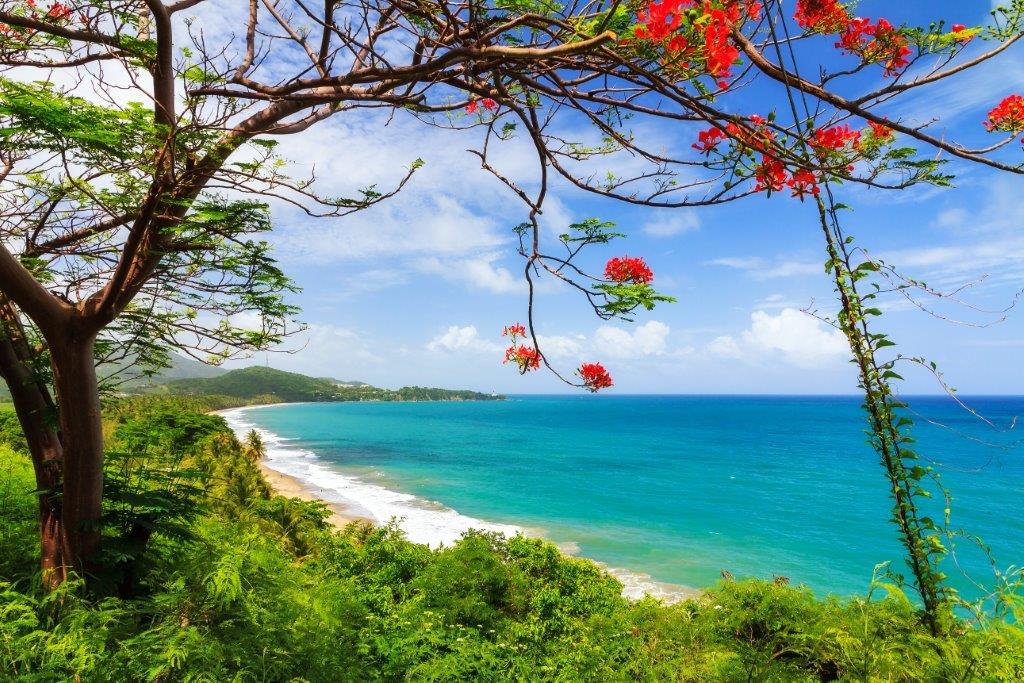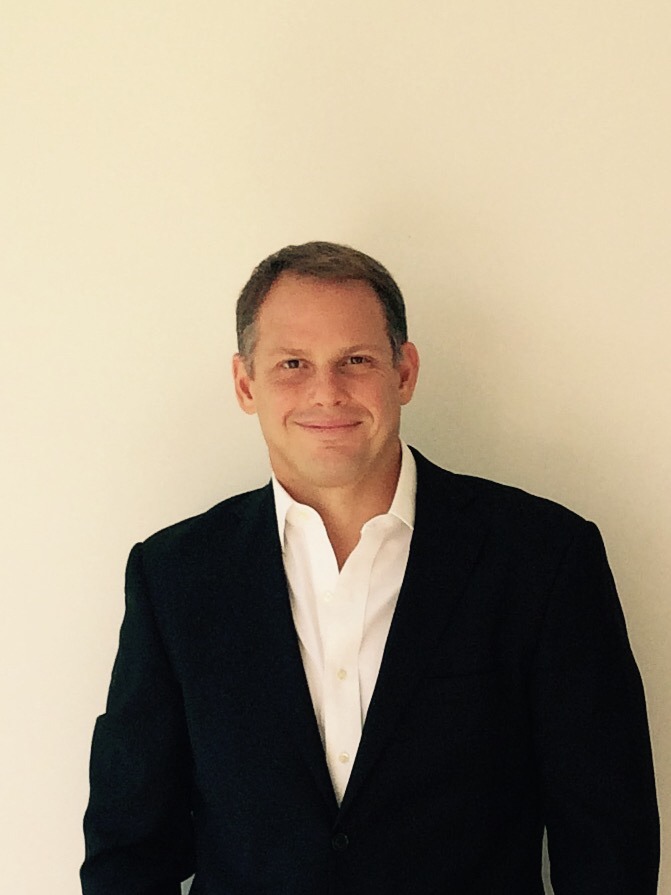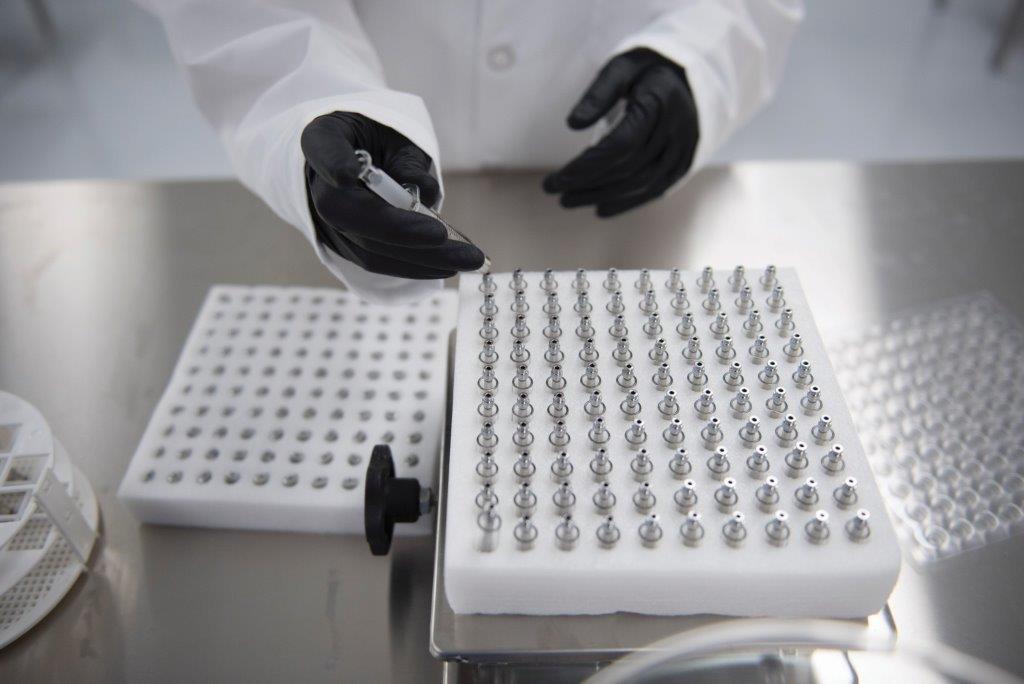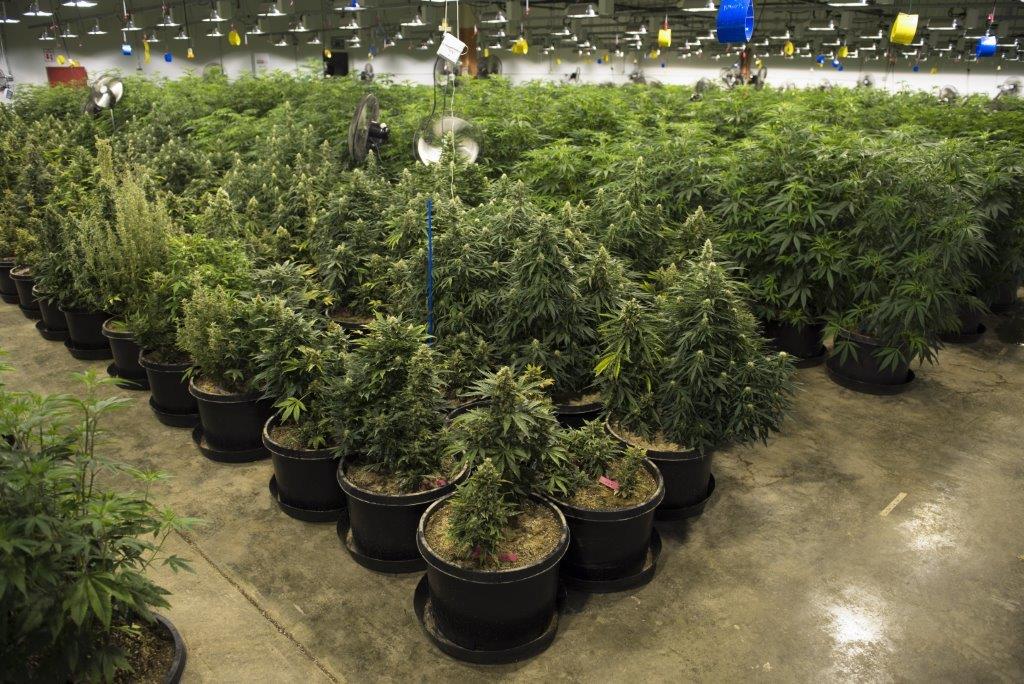
Beautiful tropical summer view of Puerto Rico with red flowers and a white beach
When most people think of cannabis and a Caribbean island paradise, Jamaica is the likely spot that comes to mind. With its huge advertising budget and many established tourist hotels, the island known for Bob Marley, white sandy beaches and reggae has become synonymous with both cannabis and the Caribbean lifestyle.
A lesser-known, but equally beautiful, piece of paradise in the Greater Antilles is the island of Puerto Rico. Located 18 degrees north of the equator and south of the Tropic of Cancer, Puerto Rico is the only U.S. territory or state with a true tropical rainforest. It also has a predictably mild climate year-round and some of the most spectacular white sand beaches in the entire Caribbean.
In a moment of supreme enlightenment, Puerto Rico’s former governor, Alejandro Padilla, legalized medical marijuana by executive order in 2015.

IMC Corp. founder and CEO Alberto Burckhart.
Alberto Burckhart, who had been following developments on the West Coast of the United States, saw an opening and quickly went to work. With mostly local financing and some outside capital, he drew up plans for a medical marijuana production facility and eventually managed to make it through the rigorous licensing process. IMC Corp. (Institute for Medical Cannabis) was one of the first medical marijuana facilities to be granted a license. Operating in a 44,000-square-foot industrial building, the cultivator currently has 15,000 square feet of indoor cannabis under lights with an additional 1,800 square feet of ISO Class 7 manufacturing space.
As a United States territory, Puerto Rico enjoys a lot of the benefits that come from being part of the U.S., while still retaining its cultural identity and political independence. To many Puerto Ricans, this represents the best of both worlds as they are able to freely travel back and forth to the mainland, while enjoying relatively simple business ties, free elections and banking regulations that roughly parallel those in the U.S. For these reasons, Puerto Rico has become a favorite satellite location for many U.S. companies that see the relative stability in the region as a big plus.
One hundred miles long and 35 miles wide, Puerto Rico (Spanish for “Rich Port”) is a place of spectacular natural diversity and geography. The interior is mountainous and rugged, with peaks that climb to nearly 4,000 feet, and includes plunging waterfalls and the 28,000-acre El Yunque National Forest. The coastal regions are flatter, containing most of the island’s population, along with its biggest cities, including San Juan, which has nearly 400,000 residents and Ponce, with 150,000.
Headquartered in the city of Ponce, along the island’s southern coast, the facility is in a building leased from the Puerto Rican government.
While the debate in the U.S. surrounding medical costs and health care is a huge issue, the problem is especially acute in Puerto Rico, the poorest jurisdiction in the United States. As such, costs associated with health care are a major concern.
“The medical marijuana community is very large in Puerto Rico, and many patients are looking to get away from addictive and costly chemical compounds,” Burckhart says. “Our current health system is failing, and many people simply want a smart alternative to the traditional model. Medical marijuana is an ideal solution as it reduces costs, increases availability, cuts down on crime and helps people get well without breaking the law.”

The Department of Health has established strict testing regulations to ensure safe products for the territory’s 250,000 potential patients.
In addition to the medical benefits, Burckhart, with a background in investment banking, also recognized that the new industry could also be a viable — and profitable — business opportunity that would employ locals and contribute to the Puerto Rican economy.
“We have a fairly high unemployment rate in Puerto Rico,” Burckhart says, “and this is a great example of how we can turn a big negative like illegal drug dealing into a positive that helps people and the economy.”

Operating at a third of its capacity, IMC has 15,000 square feet of of cannabis growing inside its facility.
Despite the island’s relatively hot and humid climate, Burckhart has had no problems cultivating medical-grade cannabis in his indoor facility. However, future plans call for the expansion into a greenhouse facility and Burckhart believes that sativa strains will likely be better suited to the tropical environment.
The island’s first dispensaries opened just as Padilla was leaving office in January 2017. At the present time, Puerto Rico has five operating marijuana dispensaries with another seven or eight expected to open in 2017. In addition, more than 100 potential outlets have been identified and qualified.

In Peurto Rico, employees are required to have either an employee occupational license or occupational management license from the Department of Health. The licensed trimming crew at IMC shows off their company pride.
Burckhart and IMC represent another huge leap forward for the cannabis industry, as yet another community recognizes its potential for the economy and citizens. However, Burckhart is quick to point out that while he doesn’t foresee any major problems with the medical marijuana industry, he believes fully legal recreational marijuana is still years away in Puerto Rico because of an active and highly vocal opposition.
In the meantime, this tropical paradise is benefiting from an enlightened government that has joined other pragmatic jurisdictions in allowing the development of an industry that an ever-increasing segment of the population views favorably.
[contextly_auto_sidebar]


